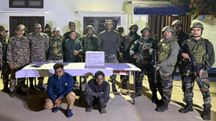Women drive economy and unity at Manipur’s all-women markets
Manipur’s all-women markets play a key role in economic growth and social unity. Women traders from diverse backgrounds come together to support each other and the local economy

At the centre of Manipur’s economy and community life, women-led markets like Ima Keithel in Imphal are playing a critical role in both commerce and social cohesion. As Asia’s largest all-women market, Ima Keithel is more than a trading hub — it’s a symbol of collective female leadership and grassroots economic power.
Nearly 4,000 women vendors manage stalls across the market, selling everything from fresh produce to handwoven textiles and traditional crafts. Operating on a model of mutual support, women from various communities, including Meitei, Naga, Kuki, and Muslim groups — supply each other with goods and collaborate in distribution. This system not only boosts local entrepreneurship but also strengthens inter-community ties in a region marked by ethnic tension.
The market is structured into sections, separating daily essentials like vegetables, fish, and groceries from sections showcasing local crafts and textiles. This organized approach helps preserve the cultural heritage of the state while creating steady income for thousands of families.
Beyond Imphal, women-led markets also thrive in districts like Tamenglong. Rani Gaidinliu Market, though smaller, has existed for generations and continues to provide economic independence to women in remote areas. These markets function as critical infrastructure in places where formal employment is scarce.
Women in Manipur are not only key players in the economy; they’re also active participants in social and political matters. Their involvement often extends beyond commerce, organising during crises, advocating for peace, and engaging in community decision-making processes.
Amid ongoing challenges, these markets remain powerful spaces where women assert agency, preserve tradition, and work toward unity. Manipur’s model of women-led economic systems offers a rare example of how localised leadership and inclusive participation can sustain both livelihoods and harmony.
Copyright©2025 Living Media India Limited. For reprint rights: Syndications Today









